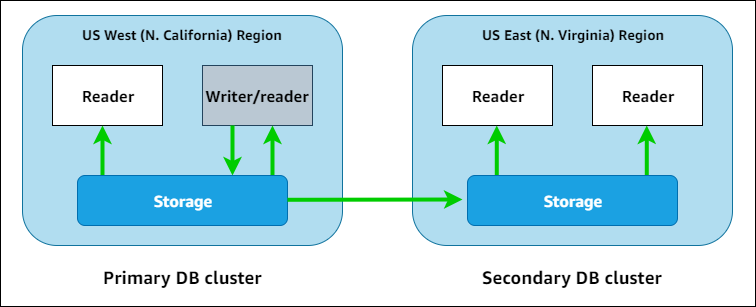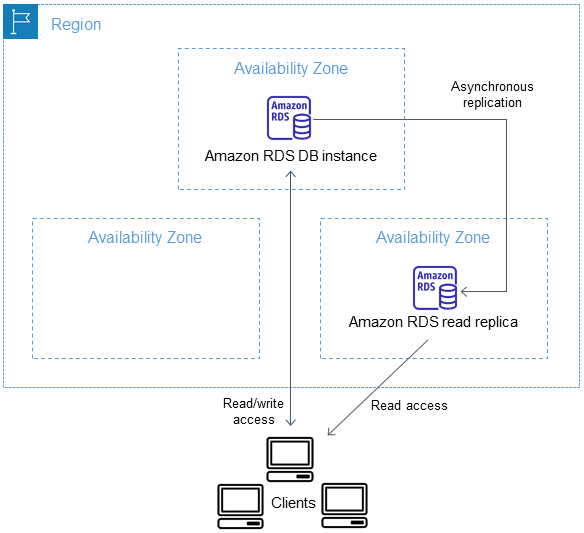Aurora DB clusters
An Amazon Aurora DB cluster consists of one or more DB instances and a cluster volume that manages the data for those DB instances. An Aurora cluster volume is a virtual database storage volume that spans multiple Availability Zones, with each Availability Zone having a copy of the DB cluster data. Two types of DB instances make up an Aurora DB cluster:
– Primary DB instance
– Aurora Replica

Aurora Global Database
Amazon Aurora Global Database is designed for globally distributed applications, allowing a single Amazon Aurora database to span multiple AWS Regions. It replicates your data with no impact on database performance, enables fast local reads with low latency in each Region, and provides disaster recovery from Region-wide outages.

Types of Aurora endpoints
Cluster endpoint – A cluster endpoint (or writer endpoint) for an Aurora DB cluster connects to the current primary DB instance for that DB cluster. This endpoint is the only one that can perform write operations such as DDL statements. Because of this, the cluster endpoint is the one that you connect to when you first set up a cluster or when your cluster only contains a single DB instance.
Reader endpoint – A reader endpoint for an Aurora DB cluster provides load-balancing support for read-only connections to the DB cluster. Use the reader endpoint for read operations, such as queries. By processing those statements on the read-only Aurora Replicas, this endpoint reduces the overhead on the primary instance. It also helps the cluster to scale the capacity to handle simultaneous SELECT queries, proportional to the number of Aurora Replicas in the cluster. Each Aurora DB cluster has one reader endpoint.
Custom endpoint – A custom endpoint for an Aurora cluster represents a set of DB instances that you choose. When you connect to the endpoint, Aurora performs load balancing and chooses one of the instances in the group to handle the connection. You define which instances this endpoint refers to, and you decide what purpose the endpoint serves.
Instance endpoint – An instance endpoint connects to a specific DB instance within an Aurora cluster. Each DB instance in a DB cluster has its own unique instance endpoint. So there is one instance endpoint for the current primary DB instance of the DB cluster, and there is one instance endpoint for each of the Aurora Replicas in the DB cluster.
RDS Multi-AZ
In an Amazon RDS Multi-AZ deployment, Amazon RDS automatically creates a primary database (DB) instance and synchronously replicates the data to an instance in a different AZ. When it detects a failure, Amazon RDS automatically fails over to a standby instance without manual intervention.
RDS read replica
A read replica is a read-only copy of a DB instance. You can reduce the load on your primary DB instance by routing queries from your applications to the read replica. In this way, you can elastically scale out beyond the capacity constraints of a single DB instance for read-heavy database workloads.

RDS cross-region read-write replica
By using cross-Region read replicas in Amazon RDS, you can create a MariaDB, MySQL, Oracle, PostgreSQL, or SQL Server read replica in a different Region from the source DB instance.
93